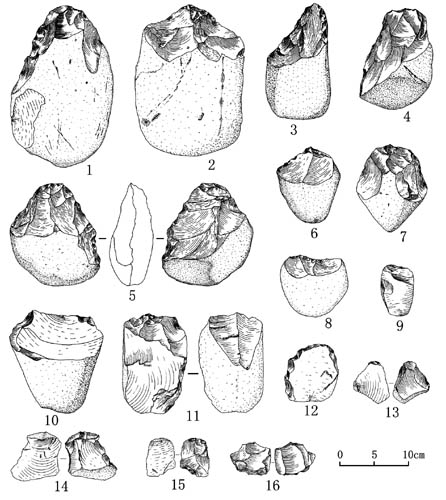Stone Artifacts Found from the Gonglou Site in Baise Basin, Guangxi, China
Stone artifacts of the Gonglou site were gathered on the surface of vermiculated red earth, including cores(n=4), flakes(n=22), choppers(n=47), picks(n=21), scrapers(n=6) and handaxe(n=1). The stone tool assemblage shows close associations with the Pebble Tool Industry (Main Industry) in South China.
Lithic raw materials exploited at the site were locally available from ancient riverbeds, and quartzite (43%), quartz (18%), silicalite (15%), siltstone (13%), fine sandstone (10%) and breccia(1%) were utilized in core reduction and tool manufacture. Blanks for tool fabrication are most cobbles.
Most of the stone artifacts are large and middle in size, while some cores, flakes, and scrapers are small. Tools are modified by direct hammer percussion.
Geomorphological and chronological comparison with other sites of the Baise Basin indicates that the age of the site should be close to the early Middle Pleistocene, which places the Gonglou paleolithic industry in the Lower Paleolithic in China.
“With these details, a future project with a good stratigraphic and chronological control should help better understand human adaptive strategies and patterns in this region, particularly, how the human behavior at open-air sites in south China”, said first author LIU Yang of the IVPP.
This work was supported by CAS Strategic Priority Research Program and Basic Research Projects of MST of China.

Fig.1 Stone artifacts from the Gonglou Site in Bose Basin. 1-4, picks; 5, handaxe; 6-8, 10, 11, choppers; 9, 12, 13, scrapers; 14, 15, flakes; 16, core. (Image by LIU Yang)
Download attachments: